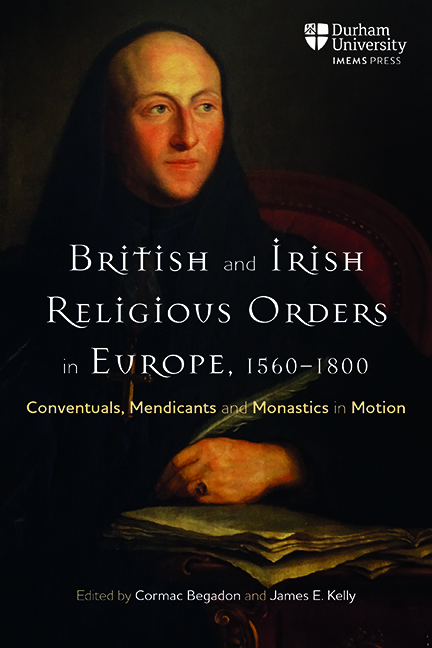 British and Irish Religious Orders in Europe, 1560-1800
British and Irish Religious Orders in Europe, 1560-1800 Published online by Cambridge University Press: 07 October 2022
I continued in the same desires to see her and be with her again, and being out of hope of this by fear I had of her death I was in extreem affliction one time after I had been a long space weeping and making my complaint in the Quire, before the Blessed Sacrament being weary I sat down in the cornner half a Sleep, there came like a bright Cloud allmost over my head, in which I perceived our Blessed Saviour like the age of 10 or 12 years who I saw so beautifull that the content tooke away the extreem grief and heavyness of heart I was in, he said what is in my Creature whom you love so much which is not in me, […] all that good in her is in me, and that I am all good and fill all places, so this past And I remained comforted both in Soul and Body, […] I felt confidence in his infinite goodness towards me, and found courage to serve God.
Anne of the Ascension Worsley, Antwerp CarmelitesThe first prioress of the English Discalced Carmelites in Antwerp, Anne Worsley, described multiple mystical experiences that occurred in the convent space throughout her life writing. In this example, Anne was deeply troubled that her spiritual mentor and blessed mother, Anne Mazanas, had fallen dangerously ill while living in Mechelen. Worsley's intense emotional state is grounded in the conventual space, specifically the choir and in the presence of the Blessed Sacrament. In her exhaustion, she experiences a vision that enters the space as ‘a bright cloud’. This event is emotionally transformative, taking away her ‘extreem grief ‘ and turning it into courage as the young Christ reminds her of his ubiquity. Jesus states: ‘I am all good and fill all places.’ This is a concept essential to Christian sacred space as well as the omnipresence of God in every place. Anne is not the only nun to have experienced such a vision at Antwerp, one that entered and permeated the literal space of the convent.
In the Antwerp annals, beginning with the foundation and through to the entries of the eighteenth century, twenty-six mystical visions are described as occurring in a specific space. Although there are numerous other examples of mystical experience, these twenty-six are stated to occur in the choir, the hallways, the dormitory cells, the infirmary and the stairs to the crypt. Space is not the only variable in such descriptions. Who documented the experience differs, what sensory phenomena are felt, changes from sight to sound, to smell, and the overall meaning of the vision drastically contrasts in each account.
To save this book to your Kindle, first ensure [email protected] is added to your Approved Personal Document E-mail List under your Personal Document Settings on the Manage Your Content and Devices page of your Amazon account. Then enter the ‘name’ part of your Kindle email address below. Find out more about saving to your Kindle.
Note you can select to save to either the @free.kindle.com or @kindle.com variations. ‘@free.kindle.com’ emails are free but can only be saved to your device when it is connected to wi-fi. ‘@kindle.com’ emails can be delivered even when you are not connected to wi-fi, but note that service fees apply.
Find out more about the Kindle Personal Document Service.
To save content items to your account, please confirm that you agree to abide by our usage policies. If this is the first time you use this feature, you will be asked to authorise Cambridge Core to connect with your account. Find out more about saving content to Dropbox.
To save content items to your account, please confirm that you agree to abide by our usage policies. If this is the first time you use this feature, you will be asked to authorise Cambridge Core to connect with your account. Find out more about saving content to Google Drive.